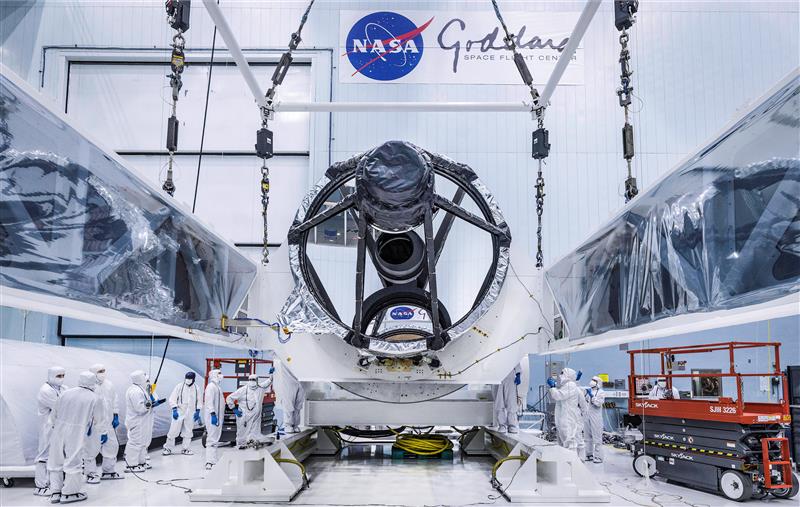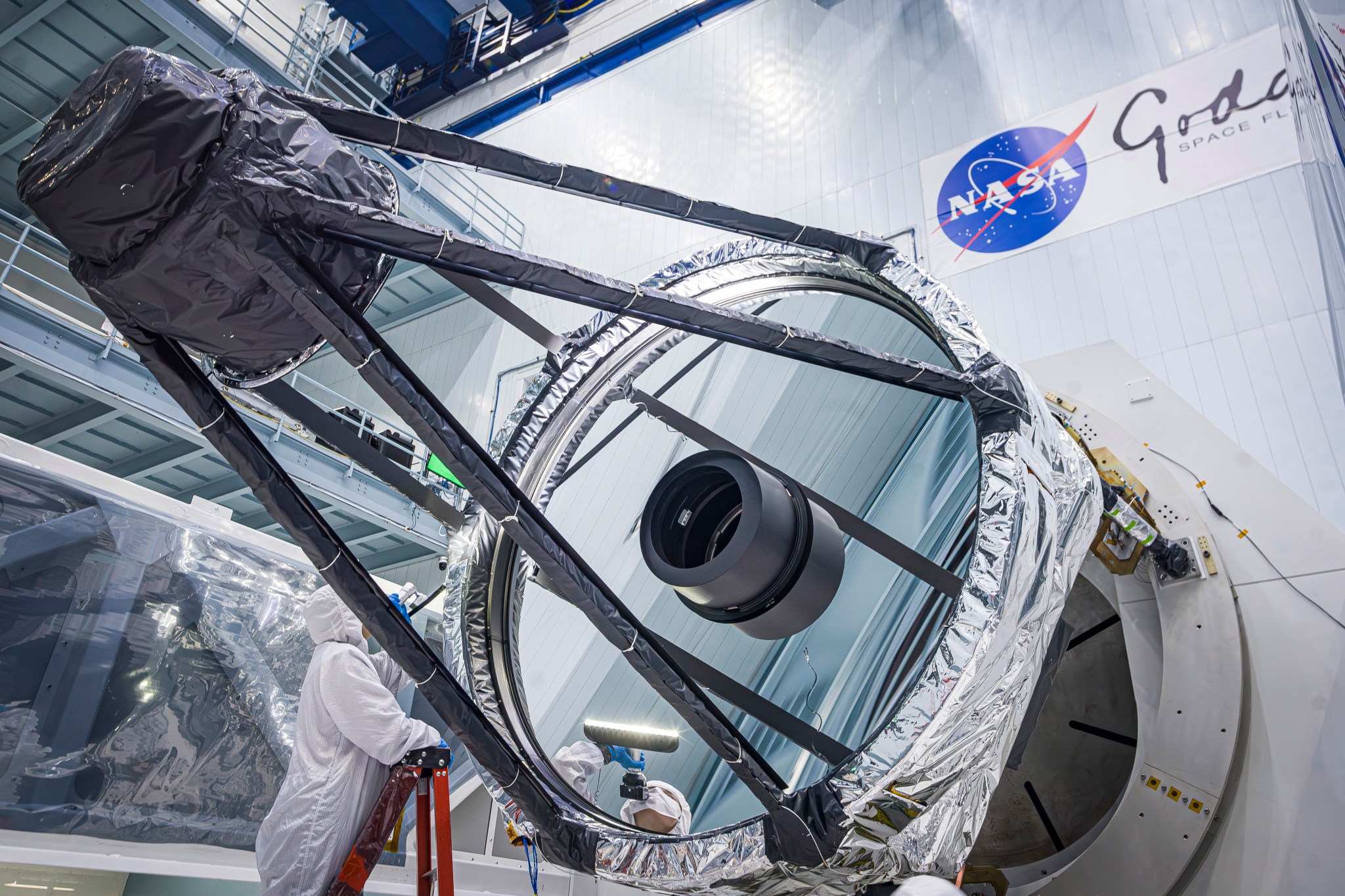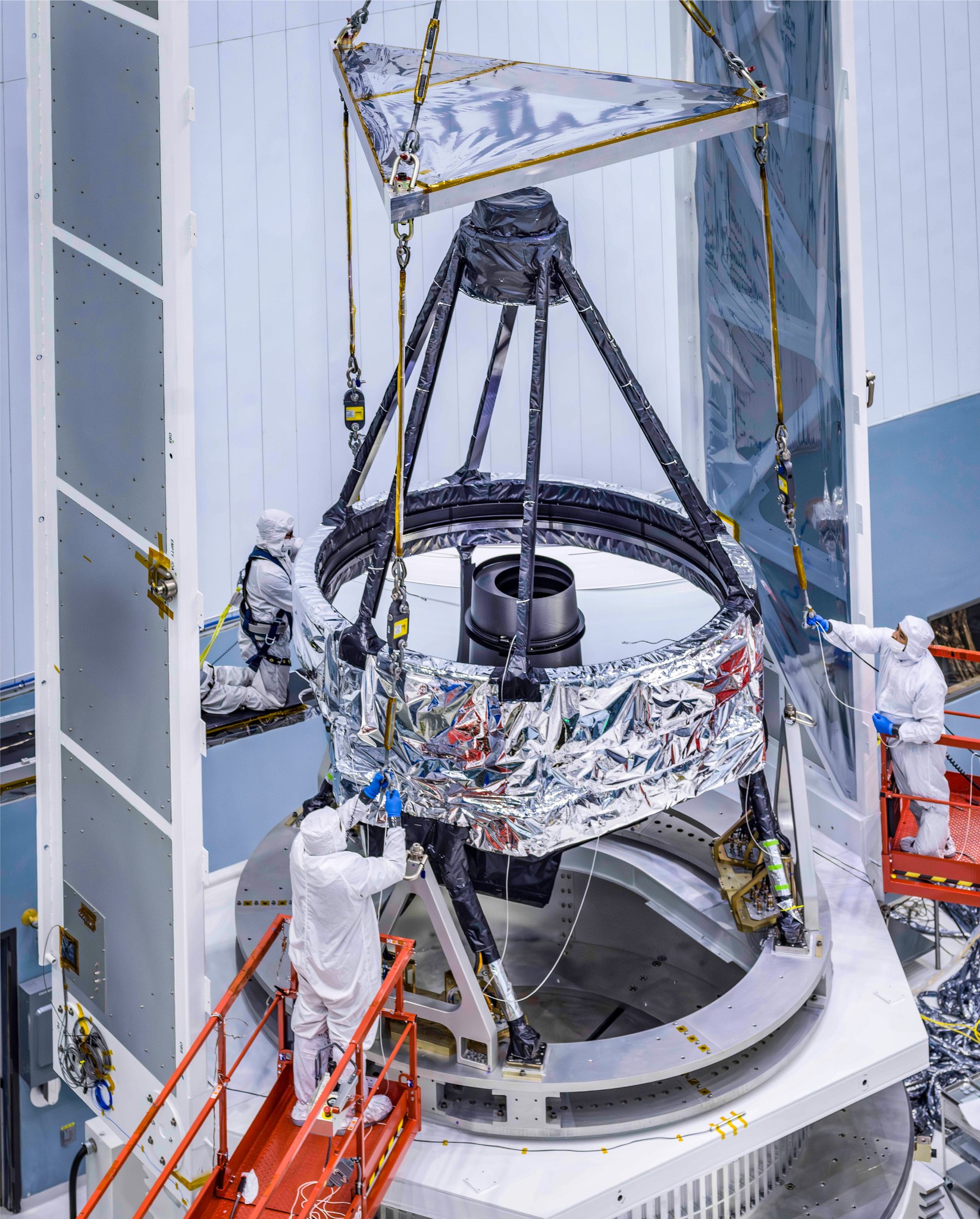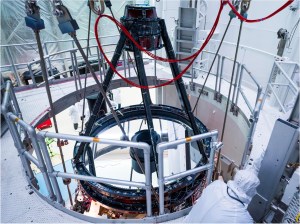NASA’s Nancy Grace Roman Space Telescope is one giant step closer to unlocking the mysteries of the universe. The mission’s Optical Telescope Assembly, which includes a 7.9-foot (2.4-meter) primary mirror, nine additional mirrors, and their supporting structures and electronics, was delivered to the largest clean room at NASA’s Goddard Space Flight Center in Greenbelt, Maryland on November 7.
The telescope will focus cosmic light and send it to Roman’s instruments, revealing many billions of objects strewn throughout space and time. Using the mission’s Wide Field Instrument, a 300-megapixel infrared camera, astronomers will survey the cosmos all the way from the outskirts of our solar system toward the edge of the observable universe. Scientists will use Roman’s Coronagraph Instrument to test new technologies for dimming host stars to image planets and dusty disks around them in far better detail than ever before.
“We have a top-notch telescope that’s well aligned and has great optical performance at the cold temperatures it will see in space,” said Bente Eegholm, optics lead for Roman’s Optical Telescope Assembly at NASA Goddard. “I am now looking forward to the next phase where the telescope and instruments will be put together to form the Roman observatory.”
Designed and built by L3Harris Technologies in Rochester, New York, the assembly incorporates key optics (including the primary mirror) that were provided to the company by NASA from existing spare parts. The team at L3Harris then reshaped the mirror and built upon the inherited hardware to ensure it would meet Roman’s specifications for expansive, sensitive infrared observations.
“The telescope will be the foundation of all of the science Roman will do, so its design and performance are among the largest factors in the mission’s survey sensitivity,” said Josh Abel, lead Optical Telescope Assembly systems engineer at NASA Goddard.
The team at Goddard worked closely with L3Harris to ensure these stringent requirements were met and that the assembly will integrate smoothly into the rest of the Roman observatory.
The assembly’s design and performance will largely determine the quality of the mission’s results, so the manufacturing and testing processes were extremely rigorous. Each optical component was tested individually prior to being assembled and assessed together earlier this year. The tests helped ensure that the alignment of the telescope’s mirrors will change as expected when the telescope reaches its operating temperature in space.
Then, the telescope was put through tests simulating the extreme shaking and intense sound waves associated with launch. Engineers also made sure that tiny components called actuators, which will adjust some of the mirrors in space, move as predicted. And the team measured gases released from the assembly as it transitioned from normal air pressure to a vacuum –– the same phenomenon that has led astronauts to report that space smells gunpowdery or metallic. If not carefully controlled, these gases could contaminate the telescope or instruments.
Finally, the telescope underwent a 25-day thermal vacuum test to ensure it will withstand the temperature and pressure environment of space. The team assessed it at minus 280 degrees Fahrenheit (minus 138 C), closely monitoring to ensure the telescope’s temperature will remain constant to within a fraction of a degree. Larger temperature variations would impact the telescope’s ability to focus, making Roman’s images less sharp. Nearly 100 heaters on the telescope will help keep it at a very stable temperature.
“It is very difficult to design and build a system to hold temperatures to such a tight stability, and the telescope performed exceptionally,” said Christine Cottingham, thermal lead for Roman’s Optical Telescope Assembly at NASA Goddard.
Now that the assembly has arrived at Goddard, it will be installed onto Roman’s Instrument Carrier, a structure that will keep the telescope and Roman’s two instruments optically aligned. The assembly’s electronics box –– essentially the telescope’s brain –– will be mounted within the spacecraft along with Roman’s other electronics.
With this milestone, Roman remains on track for launch by May 2027.
“Congratulations to the team on this stellar accomplishment!” said J. Scott Smith, the assembly’s telescope manager at NASA Goddard. “The completion of the telescope marks the end of an epoch and incredible journey for this team, and yet only a chapter in the long-term relationship between L3Harris and NASA. The team’s efforts have advanced technology and ignited the imaginations of those who dream of exploring the stars.”
The Nancy Grace Roman Space Telescope is managed at NASA’s Goddard Space Flight Center in Greenbelt, Maryland, with participation by NASA’s Jet Propulsion Laboratory and Caltech/IPAC in Southern California, the Space Telescope Science Institute in Baltimore, and a science team comprising scientists from various research institutions. The primary industrial partners are BAE Systems Inc. in Boulder, Colorado; L3Harris Technologies in Rochester, New York; and Teledyne Scientific & Imaging in Thousand Oaks, California.
By Ashley Balzer
NASA’s Goddard Space Flight Center, Greenbelt, Md.
Media Contact:
Claire Andreoli
NASA’s Goddard Space Flight Center, Greenbelt, Md.
claire.andreoli@nasa.gov
301-286-1940





